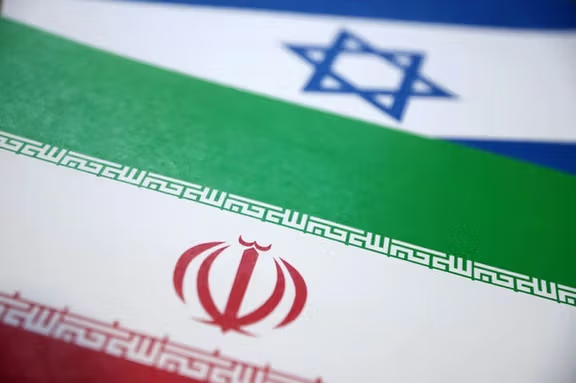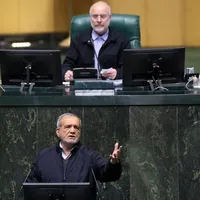The war between Israel and the Islamic Republic had lasted twelve days: missiles tracing parabolas over cities, generals vowing annihilation, state television baptizing destruction as victory.
Yet what reached me that night was not the language of battle but of exhaustion.
A mother whispered from Tehran: “We hear bombs every night. We have no quarrel with anyone.” A caller from Kermanshah, his voice trembling: “If Israel were our enemy, it would bomb the people of Iran. It doesn’t. Our enemy is here, in our own country.”
Those voices said what no Iranian newspaper dares print: this was not their war. It was the government’s.
The Dutch-based research institute GAMAAN, led by Iranian political scientist Ammar Maleki, has now measured what those voices intuited in a report released on Wednesday.
A crack in the wall
In its latest nationwide survey, 63% of Iranians described the recent Iran–Israel conflict as a war of the state, not of the people.
For the first time since 1979, data quantify an open rupture between ruler and ruled.
44% of respondents said Tehran instigated the war; only 16% believed it achieved anything. Even in a confrontation marketed as “resistance,” the public saw defeat.
Asked whom they blamed more—their own government or Israel—they chose their government by almost two to one.
These are not the cries of an enemy nation. They are the lucid admissions of a society that has stopped believing in its revolution.
The collapse of faith
For four decades, the Islamic Republic has thrived on an emotional economy of fear and sacrifice. “War is a blessing,” Ayatollah Khomeini once declared, and the state built an empire of endurance around that creed.
Martyrdom became its moral currency; hostility, its substitute for legitimacy.
But the GAMAAN figures reveal that the spell is broken. Nearly 70% of Iranians want the government to abandon its “Death to Israel” slogan. 62% favor direct negotiations with the United States. Nearly half want nuclear escalation to end. In a society long taught that compromise is betrayal, such pragmatism is radical.
Even religion—the last reservoir of the Islamic Republic’s sanctity—is ebbing.
Only 40% of Iranians now consider faith important in their lives; 57% say it is not. For a theocracy, that is not merely erosion. It is an existential reckoning.
The voices beneath the silence
As the program went on, the conversation widened. A war veteran from Golestan said he had fought eight years against Iraq, only to discover that “our real enemy was at home.”
Callers understood what the Islamic Republic cannot admit: that foreign hostility sustains domestic repression. A government unable to deliver dignity must deliver enemies instead.
A nation turning inward
If the 1979 revolution was born from a hunger for purity, the quiet revolution unfolding now is born from a hunger for normalcy.
Iranians want what most citizens of the world take for granted—work, safety, connection, a normal life. They are not turning West out of ideology but out of fatigue.
The same survey finds that more Iranians view the United States favorably (53%) than Russia or China, Tehran's chosen patrons.
After forty-five years of anti-Western indoctrination, that reversal is historic. What began as disillusionment has become a civilizational shift: a people disentangling their national identity from the myths that have imprisoned it.
The most dangerous peace
Authoritarian systems can survive rebellion, even sanctions. What they cannot endure is indifference. The most lethal threat to a system built on conflict is a population that no longer wishes to fight.
Today’s Iran is precisely that: a country where the government wages war while the nation quietly insists on peace.
The missiles may have ceased after twelve days, but the deeper conflict—between state ideology and what people actually want—continues.
And if the numbers are to be believed, the people are prevailing. Not with slogans or arms, but with fatigue, clarity and the unyielding will to live.
I ended the program that night by thanking everyone for their participation and slowly walked away from my studio thinking: There is still hope for my people.














